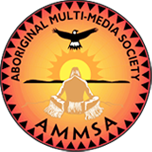Article Origin
Volume
Issue
Year
Page 2
What do Treaty 4 commemorations mean?
It all depends on who you ask.
While chiefs gathered to discuss political concerns, and others gathered for everything from seminars to parades, nine-year-old Alexander Ironeagle saw the event as a time to help his sister get her traditional dress ready for Saturday afternoon's powwow.
"What does Treaty 4 mean to the little boy from Star Blanket First Nation?" a reporter asked.
"I don't know," he replied.
Then again, Ironeagle probably hasn't gone far enough in school to learn about the historical and cultural significance of the treaty.
The commemorations, which began as a yearly event in 1987, have grown to become one of the largest political and social events in Saskatchewan.
Treaty 4 encompasses 34 bands, including seven located across the border in southwestern Manitoba, with a total membership of about 33,000.
Treaty 4 was signed between chiefs of what is now southern Saskatchewan and the federal government on Sept. 15, 1874. The treaty's signing, along with other numbered treaties throughout the West, paved the way for settlement in what is now Manitoba, Saskatchewan and Alberta.
After the signing of the treaty, chiefs and the bands they led met every September on the shores of Mission Lake until 1881, when federal Indian agents banned the meetings. Around the same time, the federal government seized about 1,800 acres of land in the Fort Qu'Appelle area that had been originally promised to the bands under terms of the treaty.
The First Nations people were moved from the area because Ottawa believed the Fort Qu'Appelle district could be the new capital of the Northwest Territories.
For almost a century, little was done by First Nations people to promote and advance the honour and respect of the treaty. Little could be done because of the restrictions the federal government placed on Aboriginal people through the Indian Act.
While the more restrictive parts of the Indian Act were removed or modified starting in the early 1960s, it took another generation of Aboriginal political leaders to build a governing structure to protect the treaty, said Mike Pinay, who's on leave from his position as Elders' service co-ordinator with the File Hills Qu'Appelle Tribal Council.
"Today we have our land back. Our people are able to gather once again," he said.
The commemorations are as much a learning experience as they are a gathering, he added.
"It's to educate not only our people but also the European people, so that they understand from where we come from."
- 1137 views
